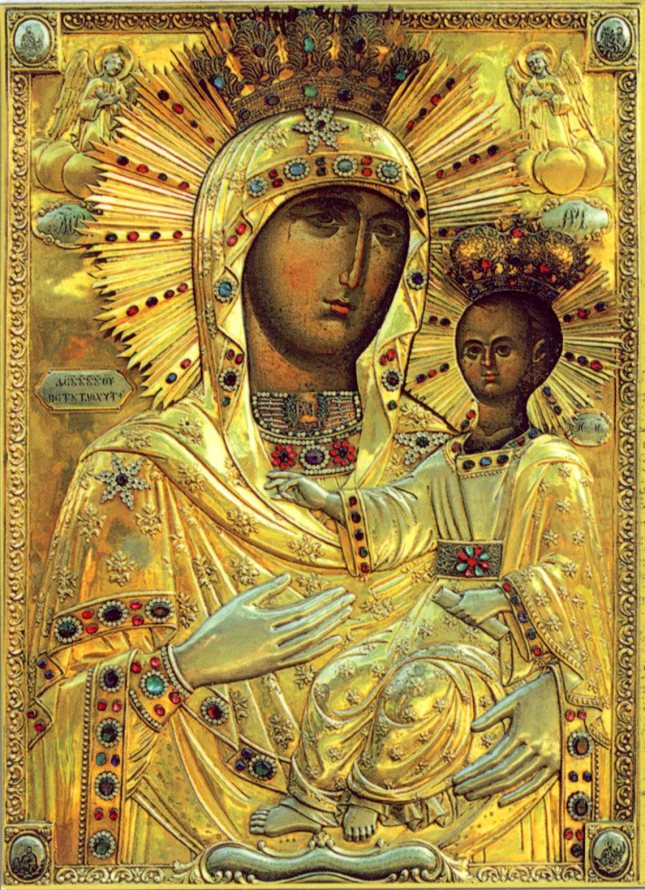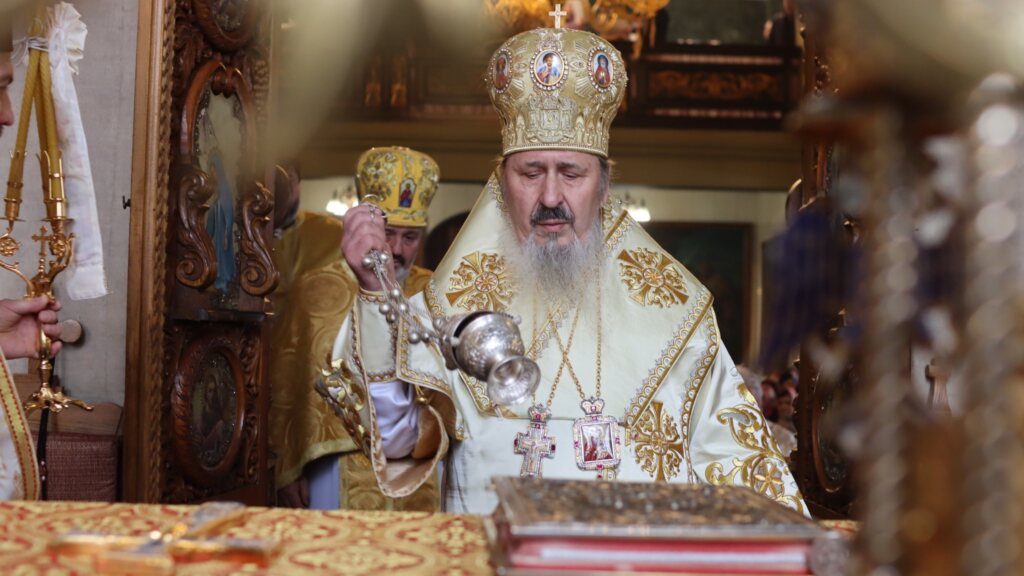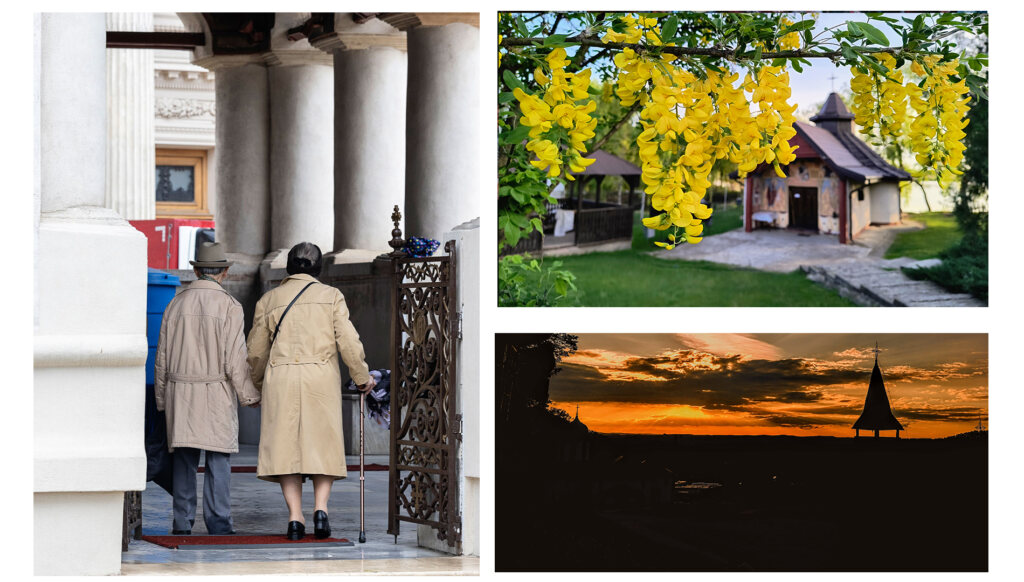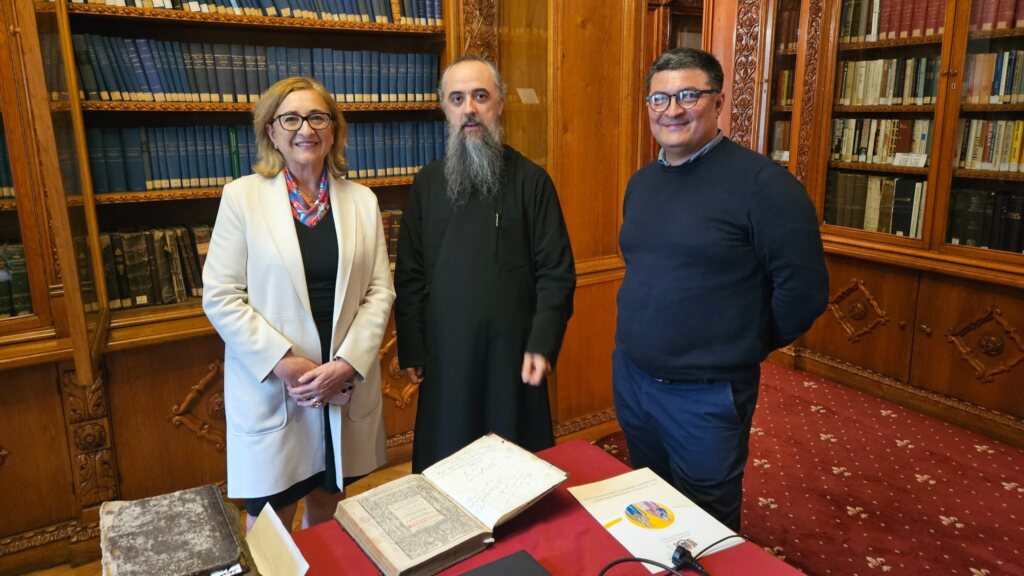The Neamţ Wonderworking Icon of the Mother of God named Hodegetria (“She Who Leads the Way”)
This icon of the Mother of God is believed to be the oldest and most beautiful in Romania and the Byzantine world. It is known throughout the world as a wonderworking icon. For over 600 years, it has strengthened Christian Orthodox faith for leaders, monks, and Romanian faithful.
It was painted in Lida (today’s Israel) around 665 and later given to Prince Alexander the Good by John Palaiologos the 8th, Emperor of Constantinople (15th century). The tradition and some documents say it is a copy of an icon which is said to have been miraculously painted on a pillar of the church in Lida.
Between June 1821 and October 1822, to protect it during an Ottoman invasion, the icon was buried in a clearing where today lies the Old Icon Sketis.
The Hieromartyr Pancratius, Bishop of Taormina
Pancratius was born when our Lord Jesus Christ yet lived upon the earth.
The parents of Pancratius were natives of Antioch. Hearing the good news of Jesus Christ, Pancratius’ father took his young son with him and went to Jerusalem in order to see the great Teacher for himself.
Troparion — Tone 8
As a flaming arrow You were sent from on high / to the throne of Taormina to wound godless impiety / and to illumine the hearts of the faithful, / confirming them in the faith through the word of God. / And having completed your course You did suffer unto bloodshed. / O Hieromartyr Pancratius, pray for all who praise your memory.
Troparion — Tone 4
By sharing in the ways of the Apostles, / you became a successor to their throne. / Through the practice of virtue, you found the way to divine contemplation, O inspired one of God; / by teaching the word of truth without error, you defended the Faith, / even to the shedding of your blood. / Hieromartyr Pancratius entreat Christ God to save our souls.
The miracles astonished him, and when he heard the divine teaching, he then believed in Christ as the Son of God. He became close with the disciples of the Lord, especially with the holy Apostle Peter. It was during this period that young Pancratius got to know the holy Apostle Peter.
After the Ascension of the Savior, one of the Apostles came to Antioch and baptized the parents of Pancratius together with all their household. When the parents of Pancratius died, he left behind his inherited possessions and went to Pontus and began to live in a cave, spendng his days in prayer and deep spiritual contemplation.
The holy Apostle Peter, while passing through those parts, visited Pancratius at Pontus. He took him along to Antioch, and then to Sicily, where the holy Apostle Paul then was. There the holy Apostles Peter and Paul made Saint Pancratius Bishop of Taormina in Sicily.
Saint Pancratius toiled zealously for the Christian enlightenment of the people. In a single month he built a church where he celebrated divine services. The number of believers quickly grew, and soon almost all the people of Taormina and the surrounding cities accepted the Christian Faith.
Saint Pancratius governed his flock peacefully for many years. However, pagans plotted against the saint, and seizing an appropriate moment, they fell upon him and stoned him. Thus, Saint Pancratius ended his life as a martyr.
The saint’s relics are in the church named for him in Rome. He is also commemorated on February 9.
Tr by oca.org







